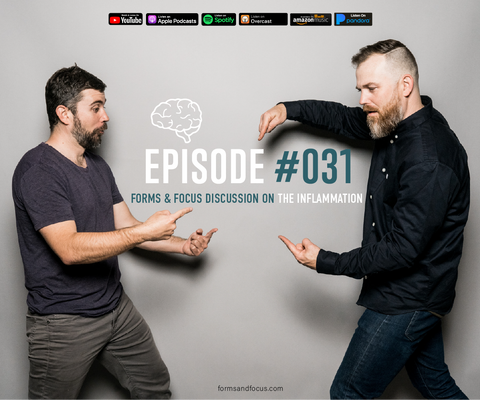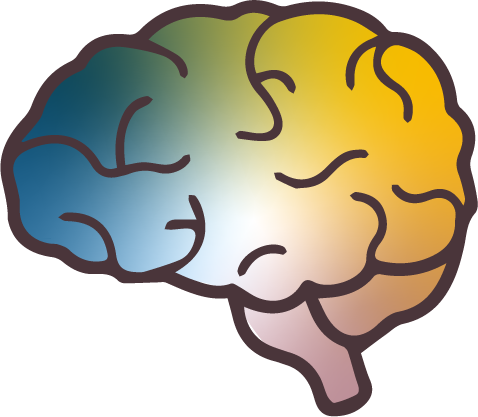
#31 Forms and Focus Discussion on Inflammation
INFLAMMATION - THE GOOD, BAD, AND UGLY
Inflammation is an effective tool for fighting infection and healing injuries. However, the sinister side of chronic inflammation is linked to a whole host of health problems. On this episode we talk about the pros and cons of inflammation and how chronic inflammation may be KILLING YOU and your dreams…..bitch
0:00 Intro to Inflammation
0:40 Intro to Podcast
1:17 How Inflammation Effects Focus
10:23 Solution to Increasing Creativity
LISTEN TO EPISODE
WATCH EPISODE
SHOW NOTES FOR EPISODE #31
PROBLEM
- Inflammation comes in two forms—acute (short-term) and chronic (long-term). Acute inflammation is the body’s immediate response to an injury or infection. It comes on quickly—usually within minutes— and disappears within days. (Harvard Medical School Special Health Report “Fighting Inflammation”)
- The Good: When you're injured, this inflammation is actually a good thing. The area you injured will become red and swell as an army of beneficial white blood cells flow in to fight infection and help you heal. The same response occurs in other parts of your body when you encounter a virus or infection. Harvard Health Publishing
- The Bad: chronic inflammation is not short-lived—and it is rarely helpful. Although it may begin with the same cellular actions as acute inflammation, it morphs into a lingering state that persists for months or years. The body sounds the alarm and emergency help arrives, but the threat never recedes, and the fire continues to burn (“Fighting Inflammation”)
- Example of Chronic inflammation: Your body continues sending inflammatory cells even when there is no outside danger. For example, in rheumatoid arthritis inflammatory cells and substances attack joint tissues leading to an inflammation that comes and goes and can cause severe damage to joints with pain and deformities.
- The most common reasons for chronic inflammation include: Autoimmune disorders, such as lupus, where your body attacks healthy tissue. Exposure to toxins, like pollution or industrial chemicals. Untreated acute inflammation, such as from an infection or injury. Cleveland Clinic
Inflammation in the brain
- When you stub your toe or cut a finger, the resulting inflammation is rapid and obvious. Deep inside your brain, inflammation can be more gradual and much harder to detect. Yet the effects of long-term inflammation on the brain can be much more destructive than a visible toe or finger injury.
- Researchers have linked brain inflammation to the development of neurodegenerative conditions like Alzheimer’s and Parkinson’s, as well as to mental health conditions ranging from depression to schizophrenia (“Fighting Inflammation”)
SOLUTION
Potential signs and symptoms of chronic inflammation include
- fatigue and lack of energy
- depression, anxiety
- muscle aches and joint pain
- constipation, diarrhea, and other gastrointestinal complaints
- headaches and a “fuzzy” mental state.
Things that cause or increase chronic inflammation
- Inflammatory foods: Fast foods, cured meats with nitrates, refined oils, trans fat, refined carbs and sugars.
- Smoking, excessive drinking, lack of sleep, chronic stress. Sound familiar!? (us talking to audience)
What can we do? Also, we are not doctors!
Drugs! Nonsteroidal anti-inflammatory drugs (NSAIDs): These over-the-counter medicines lower inflammation.
Steroid injections: Corticosteroid shots decrease inflammation at a specific joint or muscle. For example, if you have rheumatoid arthritis that affects your back
- Eat anti-inflammatory foods: (Mediterranean diet) fatty fish, green, healthy oils.
- Exercise
- Better sleep….
- Managing stress
- Quit smoking and drink less.
FIND US HERE
https://formsandfocus.com/
https://www.instagram.com/formsandfocus/
https://www.tiktok.com/@formsandfocus
#focus #podcast #collaboration

Comments (0)
There are no comments for this article. Be the first one to leave a message!